Though “adaptive reuse” has become a trendy term, the concept is hardly new, as evidenced by a building like Paris’s Palais de Chaillot. Constructed in eclectic Italianate style by Gabriel Davioud for the 1878 Exposition Universelle, the Palais du Trocadéro, as it was initially known, embraced its sloping Seine-side site with two curved gallery wings flanking a giant concert hall. Five decades later, it was transformed by the architects Jacques Carlu, Louis-Hippolyte Boileau, and Léon Azéma for another world’s fair, the 1937 Exposition Internationale des Arts et Techniques (today remembered for the architectural face-off between the Russian-Soviet and Nazi-German pavilions). After demolishing Davioud’s auditorium to create a plaza, the trio widened his exhibition wings and dressed them up in a streamlined stone veneer of Art-Deco classicism. Once the fair was over, new uses were found for the Palais, among them a national maritime museum—Musée national de la Marine, or MNM—which has shared the western wing with the Musée de l’Homme (Museum of Mankind) since 1943. Little touched in the eight decades that followed, the MNM has just reopened after a major makeover by Paris-based h2o architectes in partnership with the Norwegian firm Snøhetta.
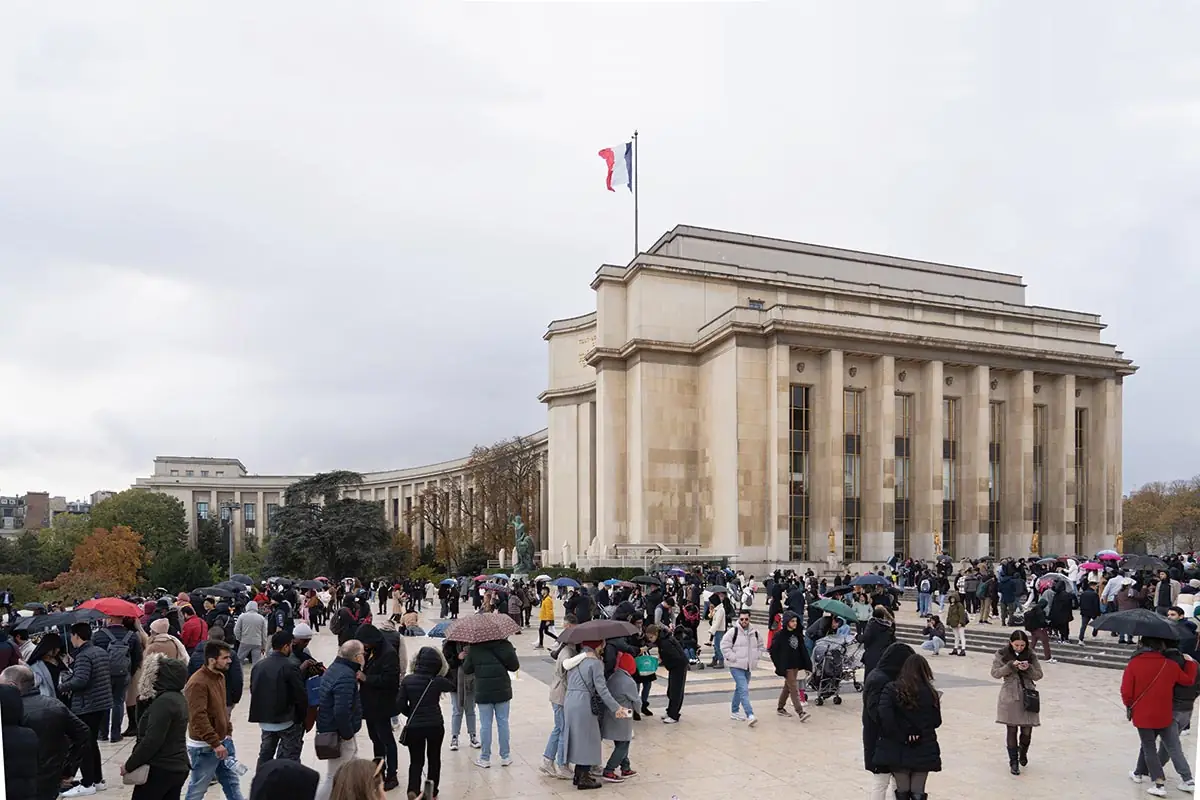
Palais de Chaillot gently curves across its site. Photo courtesy of h2o architectes, click to enlarge.
“We designed more with voids than with solids,” says h2o partner Antoine Santiard about the delicate art of inserting new program into a complex sequence of historic galleries. Winner of the 2017 design competition for the project, the h2o-Snøhetta partnership brought together the Norwegians’ museum and maritime experience (including the semi-submerged Oslo Opera) with the Parisians’ detailed knowledge of handling Expo 37 monuments: in 2019, h2o completed a partial refurbishment of Paris’s Musée d’Art Moderne, which occupies the east wing of the nearby Palais de Tokyo, the fair’s other permanent structure.
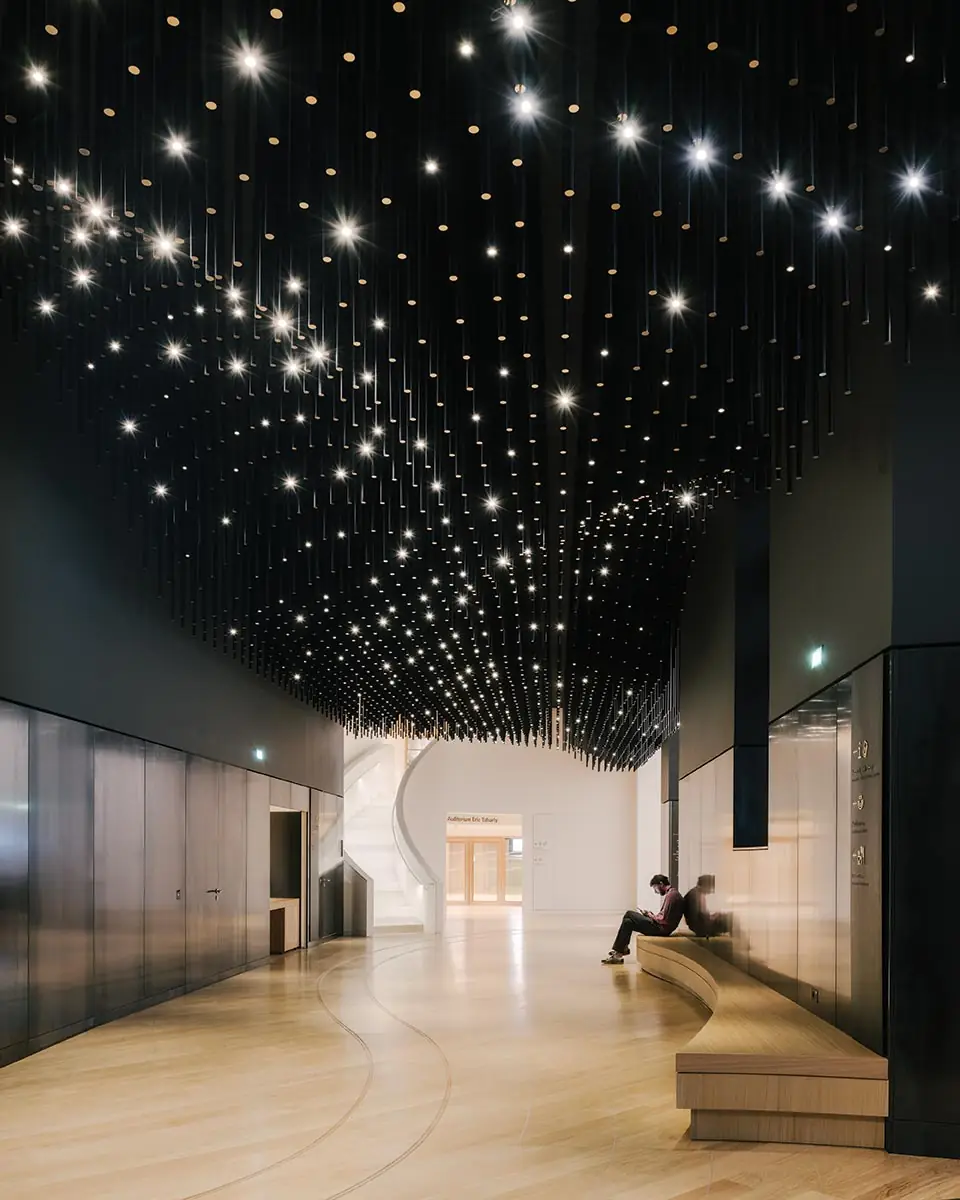
1
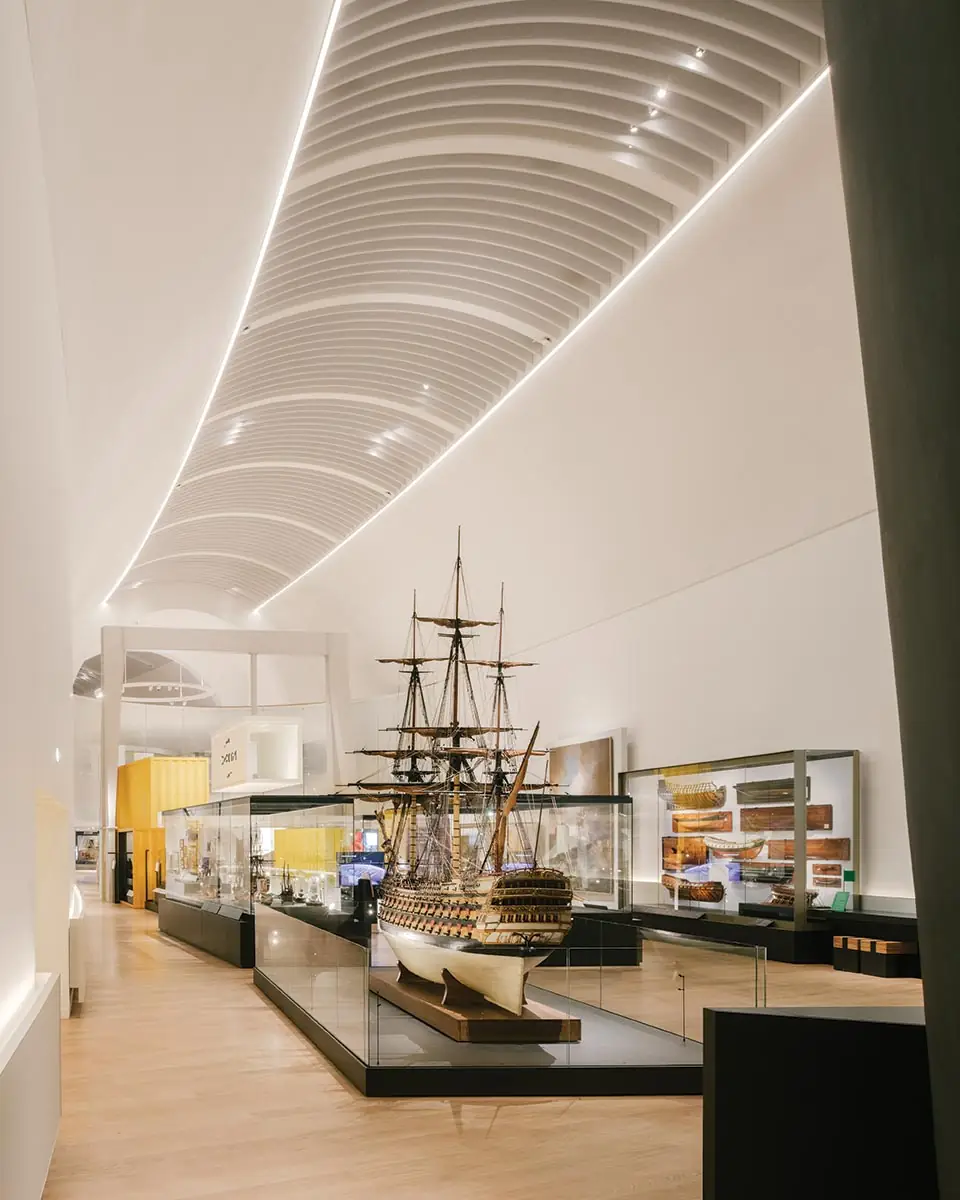
2
A low-ceilinged lobby (1) flows into a long, barrel-vaulted space (2). Photos © Maxime Verret
At the Palais de Chaillot, the team inherited a challenging set of spaces. The MNM’s entrance opens laterally from an unheated vestibule shared with the Musée de l’Homme, and flows seamlessly into the soaring, 620-foot-long Galerie Davioud, the original 1878 top-lit hall. Running in parallel, along the river-facing facade, the 1937 Galerie Carlu is half its height (the Musée de l’Homme occupies the floors above), and receives daylight from tall windows looking toward the Eiffel Tower. Further exhibition space is located in the Galerie Davioud’s basement, at the far end.
In a classic game of contrast and surprise, the architects made their entrance low, dark, and hushed, with oxidized steel on the walls and lacquered aluminum rods hanging from the ceiling. Calibrated to produce an undulating effect, the rods are dotted here and there with LEDs that generate a kinetic wave of light (a cousin of sorts to the light installation on the underside of Snøhetta’s Le Monde headquarters). Arriving in the 38-foot-high, all-white Galerie Davioud, one cannot but be impressed by its lofty volumes, streamlined with a barrel-vaulted inner shell that, as well as recalling the rather Deco 1943 interior, hides ventilation and electrical systems while permitting daylight to filter through the central skylight. Overlooking this initial segment of the Galerie Davioud, like a ship’s bridge, is the first of two new glass-fronted mezzanines accommodating supplemental program. Carried on slender pre-tensioned steel beams (water-filled sacks were used to keep them flat while the glass was installed), the mezzanines allowed the architects to divide the gallery’s enormous length into three parts without compromising visual continuity. A bravura moment in the refurbishment, these levels feature beautifully executed spiral stairs and concave elevations that echo Davioud’s crescent plan.
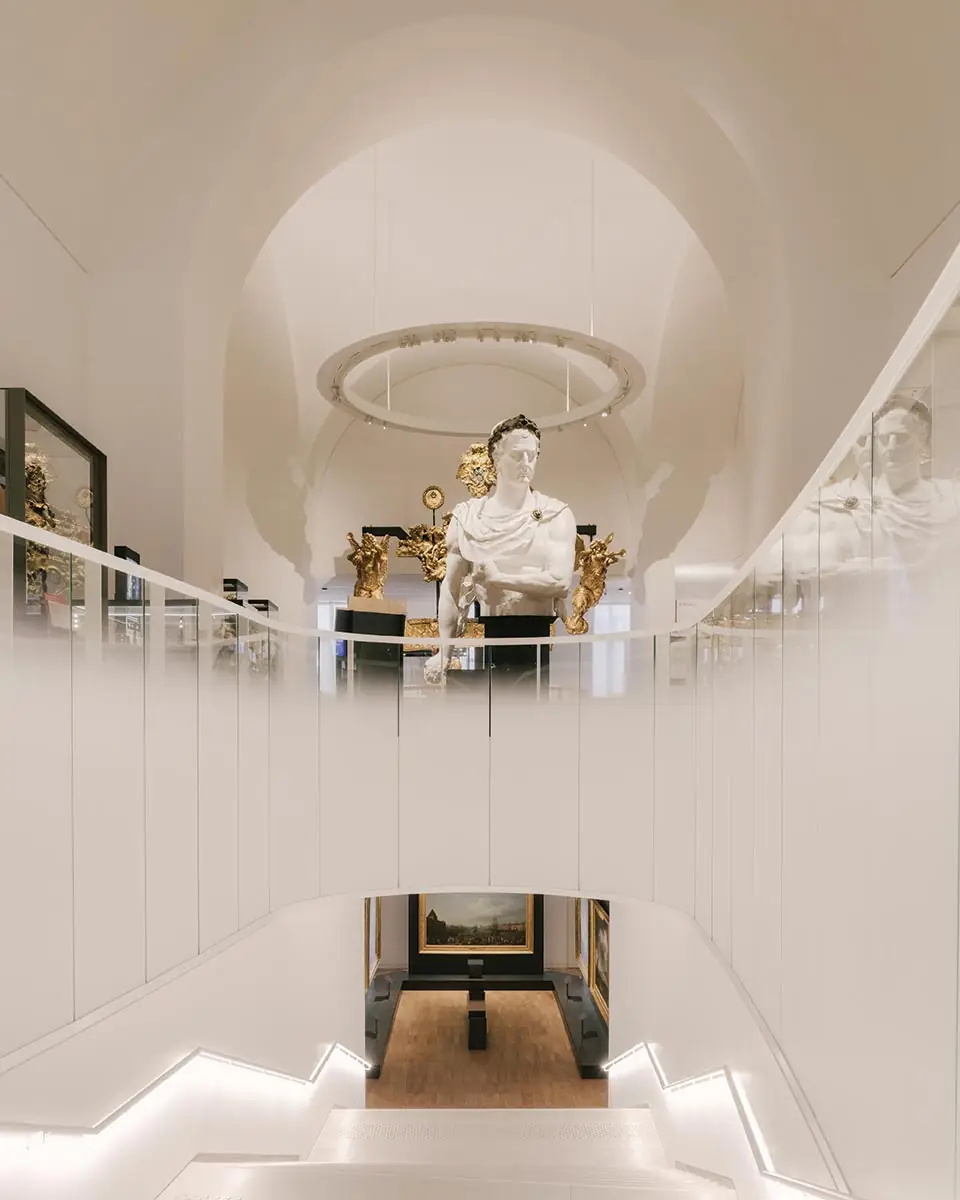
Lower levels aid circulation routes. Photo © Maxime Verret
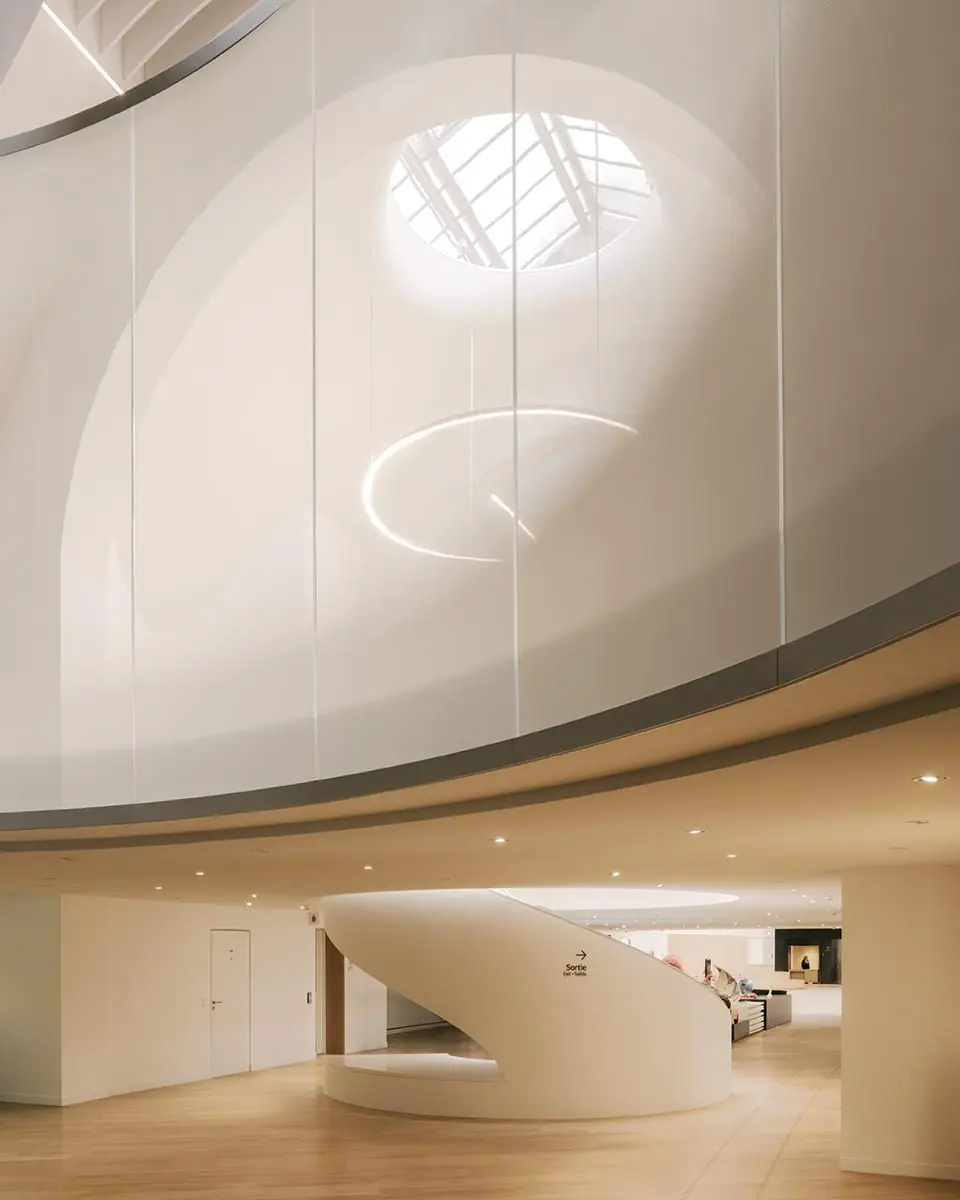
Spiral stairs lead to mezzanines with curved, silkscreened glass. Photo © Maxime Verret
Guests do not need to pay to visit this first section of the Galerie Davioud or the ancillary facilities located in the equivalent portion of the Galerie Carlu—spread over two levels, these include a restaurant, a bookshop, seminar rooms, and a full-height auditorium with retractable seating. To access the permanent collections, visitors pass through turnstiles just beyond the first mezzanine. In this second segment of the Galerie Davioud, the architects made a lucky discovery—a long-forgotten stairway to the basement, which they opened up again to improve circulation (with stairs at either extremity, as intended in 1878, the downstairs exhibition space is no longer a dead end). The team also opened up the final section of the Galerie Davioud, which used to terminate in a blank wall, behind which were the old auditorium and the staff offices, located in the Pavillon d’About. Punctuating the Palais’s western end, the pavilion has been entirely transformed: after moving the offices to its perimeter, the architects reconnected its core to the gallery, as planned in 1878. A 1937 oculus offers views into the basement once more, and newly unblocked windows allow visitors to orient themselves in the cityscape. Here, at the end of the circuit, they can either retrace their steps, or enter the temporary-exhibition space in the neighboring section of the Galerie Carlu.
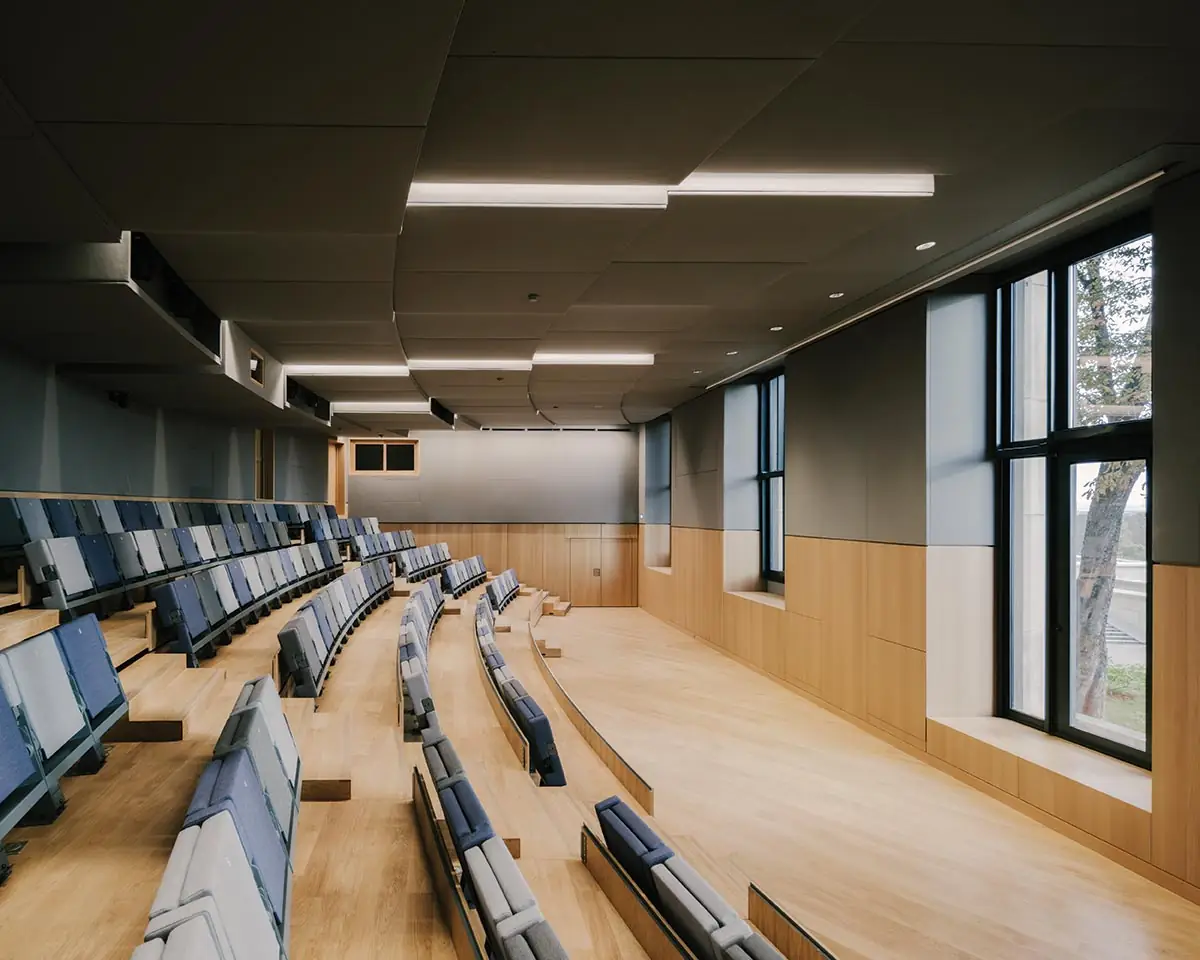
The museum now includes an auditorium. Photo © Maxime Verret
Inevitably, given the difficulty of squeezing modern museum facilities into a rambling old building, there are awkward moments, mostly in the ancillary areas, which can feel a little cramped. But the architects’ decision to emphasize the majestic volume of the Galerie Davioud was the right one. Commissioned to design the permanent display, exhibition specialists Casson Mann couldn’t resist the opportunity to fill the cavernous space with dramatic elements—a ship’s prow, a container gantry, a life-size wave installation—somewhat to the architects’ chagrin. Rising high into the vault, these monumental, attention-seeking solids spoil the views across their beautiful pristine voids.
Click drawing to enlarge
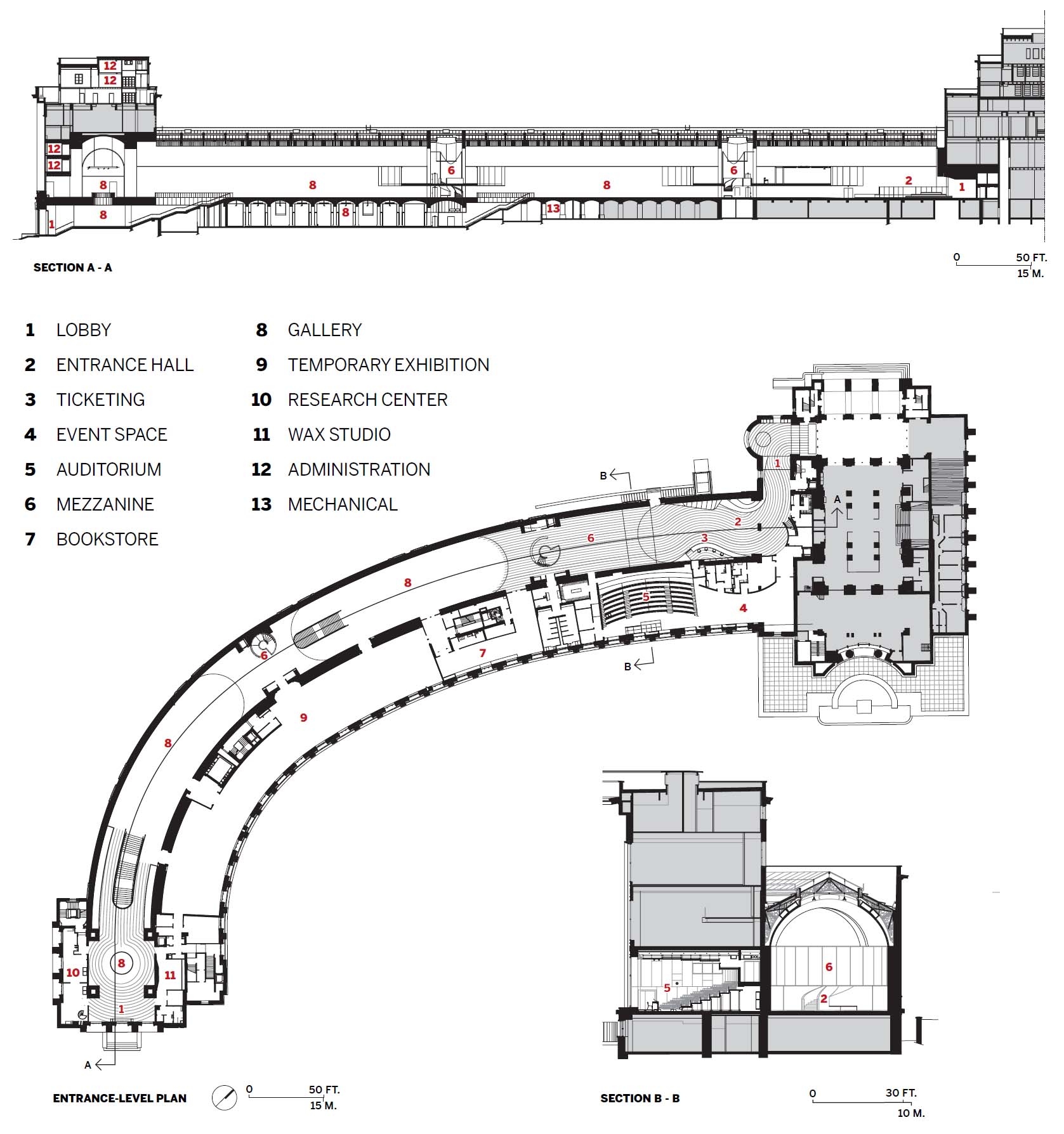
Credits
Architect:
h2o architectes
Associate Architect:
Snøhetta
Engineers:
Équilibre Structures (structural); IGREC (m/e/p, sustainability)
Consultants:
VPEAS (cost consultant); Impédance (acoustics) Agence ON (lighting); Casso & Associés (fire safety, accessibility); Scenevolution (auditorium)
General Contractors:
Premys, Eiffage Construction Equipements
Client:
Musée national de la Marine with OPPIC
Size:
96,000 square feet
Cost:
$77 million
Completion Date:
November 2023
Sources
Glazing:
ITS (curved glass)
Lighting:
Bilton, iGuzzini, Planlicht
Light Diffusion:
Griesser (roller blind); Mermet, Filtersun (textiles)
Partition Walls:
Eole
Acoustical Finishes:
Icoustic (plaster); Rockfon, MOSA (tiles); Ecophone, Texaa Vibrasto (textiles); Topakusitic Perfo (wall panels)



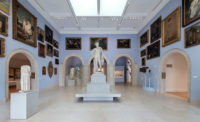
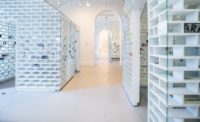
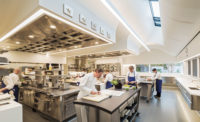
Post a comment to this article
Report Abusive Comment